#tosa-class battleships
Explore tagged Tumblr posts
Text

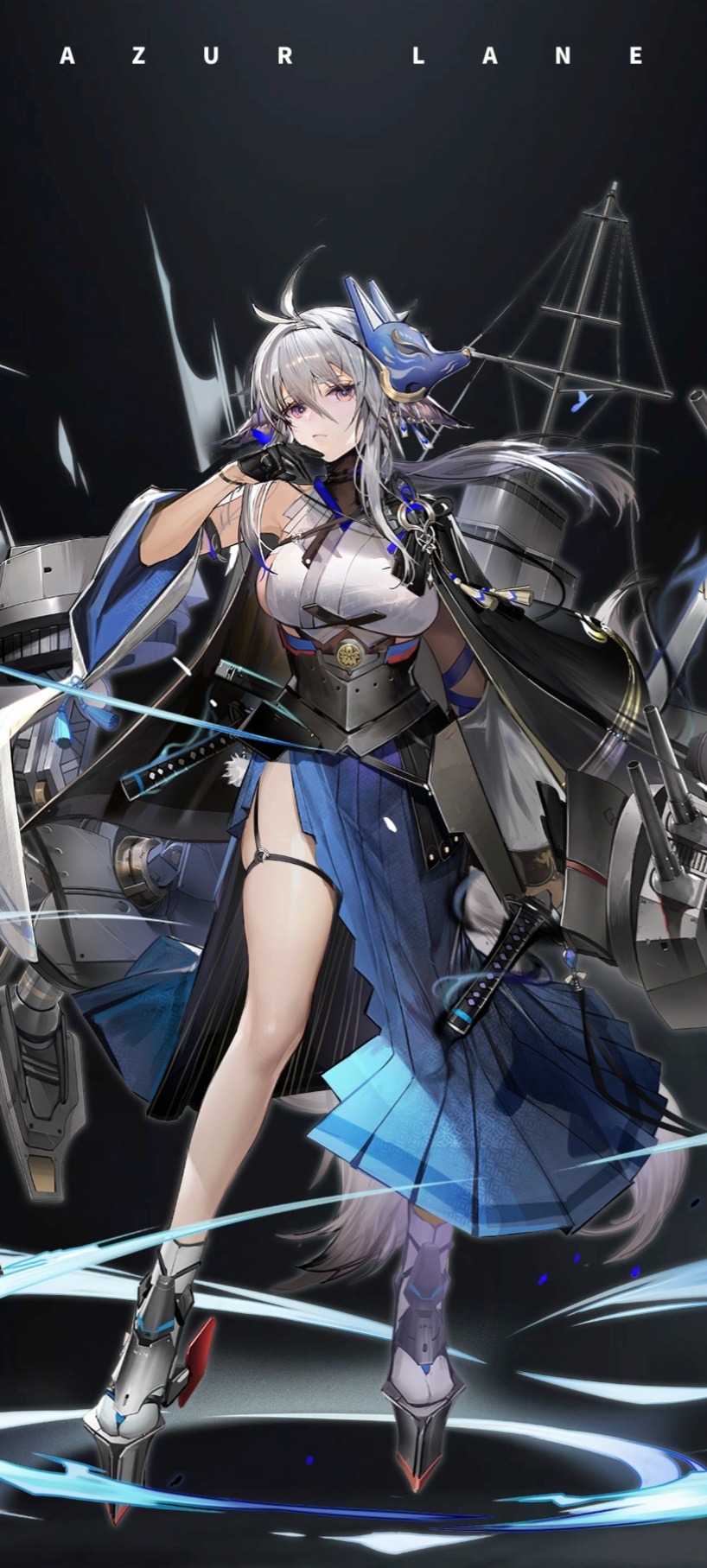
#azur lane#アズールレーン#sakura empire#tosa-class battleships#kaga (bb)#tosa#ijn#default#character wallpapers
0 notes
Text
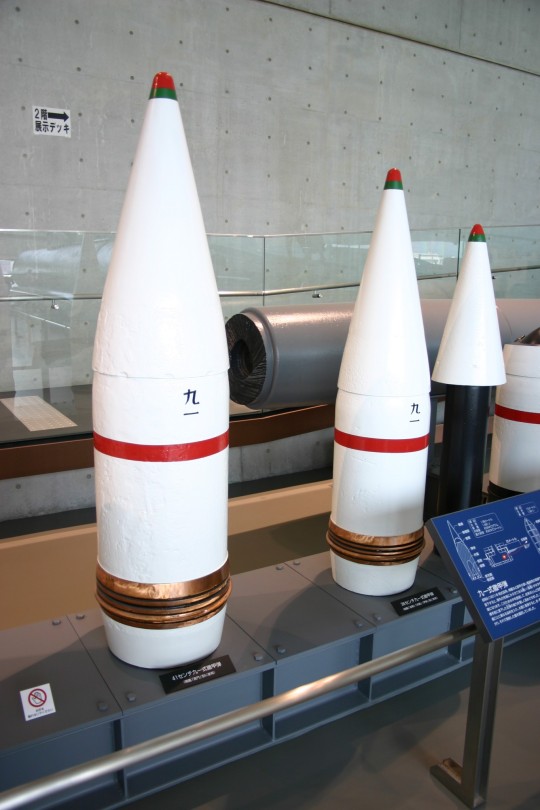
"After World War I, the victorious Allied powers signed the Washington Naval Treaty in 1922 which sought to limit a new naval race. Japan was allocated 60% of the tonnage allowed to the United States or Great Britain. The Imperial Japanese Navy saw the United States Navy as their most likely opponent for the future and concluded they would have to defeat a numerical superior foe.
The IJN pursued a number of avenues to achieve this between the wars. They included building individually superior ships armed with guns and torpedoes that could strike the enemy at ranges beyond his abilities to reply. Long range submarines and twin-engine naval attack aircraft were built to attack the American fleet as it approached to reduce its strength. The battleships trained to fire from behind a smoke screen with their salvos spotted by aircraft protected by carrier fighters. An accidental discovery led to the development of the Type 91 Armor Piercing Shell (APC).
During the Russo-Japanese War of 1905-05, the Japanese fired 'common' shells which were designed to explode on contact and not pierce heavy armor. The explosive filler was 'Shimose' which was based on a piric acid formula. The results had been spectacular. The shells ripped large holes in high sided Russian battleships whose narrow belts were submerged due to being overloaded. The results impressed RN observers which developed their own common shells using a piric acid-based explosive called 'Lyddite'. While very powerful, Shimose and Lyddite were sensitive and often exploded on contact.
During World War I, the Japanese were impressed by the performance of German APC shells which used TNT as a filler. TNT was less sensitive to shock allowing the shell to remain intact as it passed through armor and explode behind inside the ship. The Japanese obtained samples of these shells post war and worked to develop their own version.
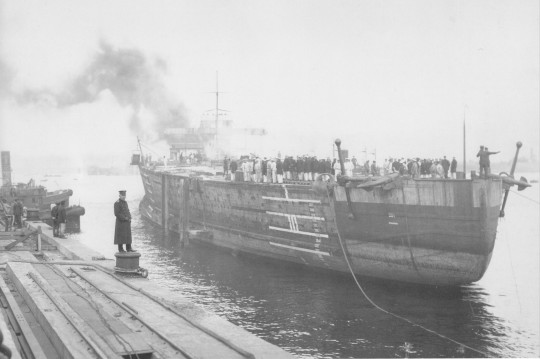
In the summer of 1924, the Japanese Navy conducted tests against the old battleship Aki (安芸, Aki Province) and the new, but incomplete battleship Tosa (土佐, Tosa Province) slated for disposal under the new naval treaty. Both ships were subjected to 16 inch shell fire at a range of 20,000 meters (21,872). Of the shells fired at Tosa yards, two struck the water short of the ship and travelled underwater and into the ship under her armor belt.

The first hit 25 meters short of the ship on her port side and penetrated the hull 6 feet below her armor belt. The shell passed through several torpedo bulkheads and exploded in her after engine room. Over 3,000 tons of water entered the ship. Another hit farther forwards hit 10 meters short of the ship and passed under her armor belt and exploded near her centerline. 2,300 tons of water flooded into the ship. A similar hit on the old battleship Aki sank her."

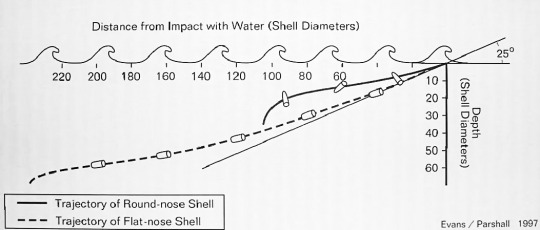
Trajectories of shells underwater.
"The Japanese sought to capitalize on this effect by developing a shell that could have a consistent underwater path. They estimated the ability to hit underwater effectively doubled the 'danger space' of the target and cause greater damage than normal shells. The Japanese term for this was 'Suichudan'.

The shells used in the Tosa test was adopted in June 1925 as the No. 5 APC shell. The first shell specifically designed for underwater hits was the Type 88 or No. 6 adopted on November 7, 1928 in 8 inch, 14 inch, and 16 inch calibers. The Type 88 featured a blunt nose for a more stable underwater trajectory."

Type 91 AP shell, large caliber.
"The Type 91 APC was adopted in 1931 and featured a two-piece armor piercing cap under a streamlined windshield. On striking the water or light armor, the windshield and upper cap were torn away. The flatter lower cap and blunt shell body would be stable underwater and shoulder of the blunt shell bit into the armor surface struck while the rotating torque from the impact turned the shell into rather than away from the armor surface. The rear of the shell body was tapered into a 'boat tail' shape which extended the shells range and stability in flight. in 1941, a dye pack was added to assist in spotting the fall of shot.

Optimal performance was obtained at an angle of fall of 17 degrees and hitting the water about 40 meters short of the target. The blunt shell body allowed strikes up to 80 meters short to still retain enough energy to penetrate the hull. Shells falling at an angle from 17 to 25 degrees could still make an underwater hit if hitting the water 20-25 meter from the ship. Ballistic differences with different guns gave different ranges for optimal operation.
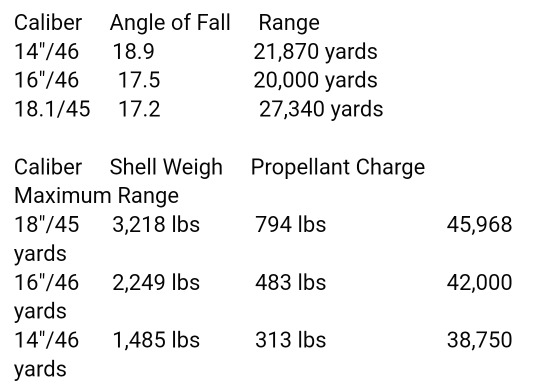
The Japanese sought to keep the Type 91 and Suichudan secret. However, the British learned about this threat during firing tests to the old battleship Emperor of India in 1931 and a deeper vertical belt was adopted for the new KG V class. The North Carolina class was to have included a lower 3.5 inch belt to protect against such hits, but the 750 ton weight penalty was too much for the treaty limited 35,000 ton design. 3.5 inch armor patches to protect her magazines were added to her inner torpedo holding bulkhead. The follow on South Dakotas and lowas featured an internal belt sloping belt that tapered as it went towards the ship's bottom. In 'Naval Firepower', Friedman speculates that knowledge of the Type 91 may have been obtained through the same radio intelligence that revealed the rebuilt Nagato's trial speed of 26.5 knots late in 1938. In his earlier 'US Battleships: An Illustrated Design History' he notes that tests in the early 30s revealed the threat."

Fragment damage from hit No.6 to bulkhead No. 35, as seen from magazine A-507-M onboard USS Boise.
"In combat, there was only one incident where the Type 91 performed as designed. A Type 91 struck short of the light cruiser USS Boise and penetrated her 6 foot magazine. The shell exploded, but flooding prevented a magazine detonation. In her duel with Bismarck and Prinz Eugen, one 15 inch and three 8 inch shells struck Prince of Wales underwater. The 15 inch shell passed under her belt and ended up against her inner holding bulkhead but did not explode. The 8" hit caused minor flooding through holes in the shell plating."
Information posted by Michael Makanaphy on the Battleships and Battlecruisers Facebook page: link
source, source, source, source, source, source
#Japanese Battleship Tosa#Tosa#Tosa Class#Battleship#Dreadnought#16 inch gun#16 inch shell#Imperial Japanese Navy#IJN#long post#1926#undated#August#my post
87 notes
·
View notes
Text
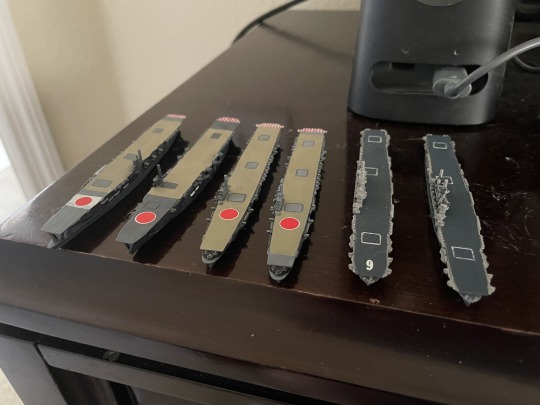
From left to right: Akagi, Kaga, Shōkaku, Zuikaku, USS Enterprise, and USS Hornet
Akagi was originally designed as an Amagi-class battlecruiser. However, due to the Washington Naval Treaty, the Imperial Japanese Navy had to convert the two ships into aircraft carriers. Amagi was critically damaged in the 1923 Tokyo Earthquake, and was scrapped. Akagi would go on to serve as the flagship for the Attack on Pearl Harbor in 1941, before being sunk at the Battle of Midway in 1942.
Kaga was originally a Tosa-class battleship, who fate became ambiguous with the Washington Naval Treaty (her sister ship, Tosa, was completed as a target ship). With the scrapping of Amagi, it was decided to complete her as an aircraft carrier. She also sank at Midway.
Shōkaku and Zuikaku were built in the late 1930s, and took part in the Attack on Pearl Harbor, the Battle of the Coral Sea, the Guadalcanal Campaign, the Battle of Santa Cruz, and the Battle of the Philippine Sea. Shōkaku would sink due to damage inflicted by the submarine USS Cavella, while Zuikaku was sunk by carrier based bombers at the Battle of Leyte Gulf.
USS Enterprise was a Yorktown-class carrier, that went on to become the most decorated American ship in World War II, serving in the entire Pacific Theater. The Japanese claimed sinking her on three occasions, leading to her being called ‘the Grey Ghost’. Though she was decommissioned in 1947, the name continues on in the form of the first nuclear-powered carrier, and a planned Gerald Ford-class carrier.
USS Hornet was also a Yorktown-class carrier, best known for carrying the B-25 bombers used in the Doolittle Raid. She sank during the Guadalcanal campaign.
Models are from ModelsInMiniature on Etsy:
3 notes
·
View notes
Photo

Kaga (加賀) was an aircraft carrier built for the Imperial Japanese Navy (IJN) and was named after the former Kaga Province in present-day Ishikawa Prefecture. Originally intended to be one of two Tosa-class battleships, Kaga was converted under the terms of the Washington Naval Treaty to an aircraft carrier as the replacement for the battlecruiser Amagi, which had been damaged during the 1923 Great Kantō earthquake. Kaga was rebuilt in 1933–35, increasing her top speed, improving her exhaust systems, and adapting her flight decks to more modern, heavier aircraft.
The ship figured prominently in the development of the IJN's carrier striking force doctrine, which grouped carriers together to give greater mass and concentration to their air power. A revolutionary strategic concept at the time, the employment of the doctrine was crucial in enabling Japan to attain its initial strategic goals during the first six months of the Pacific War. (Wikipedia)
25 notes
·
View notes
Text
HASHIMA, l’île navire-de-guerre
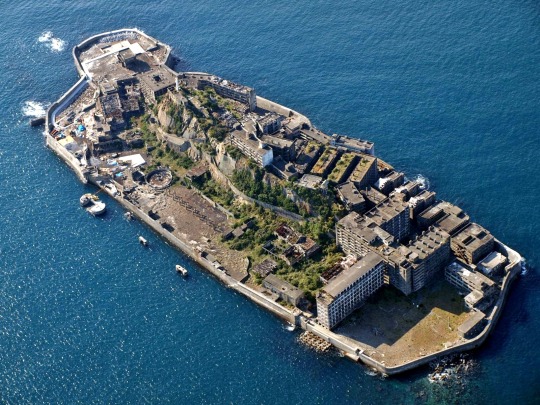
L'étrange et fascinant cas de l'île japonaise d’Hashima, découverte dans le film sud-coréen coup-de-poing THE BATTLESHIP ISLAND :
Hashima est une île qui se situe au large de Nagasaki, au Japon, et dont la superficie atteint 6.3 hectares. Son surnom d’"Île Navire-de-guerre" (Gunkanjima) lui vient de sa forme quasi-semblable à celle des cuirassés japonais de classe Tosa, utilisés notamment durant la Seconde Guerre Mondiale.
Son histoire commence en 1810, lorsqu’un fort gisement de houille y est découvert. 80 ans plus tard, Mitsubishi achète l’île et fait venir la main-d’œuvre nécessaire à l’exploitation de ce gisement. Sur la surface de l’île, tous les éléments d’une ville sont construits (immeubles d’habitation, commerces, écoles, aires de jeu, services administratifs, un hôpital, etc.), alors qu’en sous-sol s’étendent plusieurs mines et raccordements labyrinthiques. Après la guerre, le rendement minier de l’île connaît une forte progression, en adéquation avec l’évolution de la population qui grandit d’années en années, atteignant une densité record de 84 100 hab/km2 en 1959, soit la plus haute densité urbaine jamais enregistrée au monde.
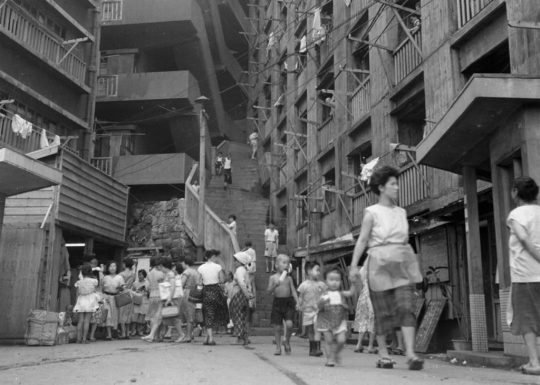
Mais si Hashima est célèbre pour sa géographie et sa densité, elle l’est tout aussi pour les crimes de guerre dont elle fût le théâtre, notamment lors de la Guerre du Pacifique. Alors que la Corée (depuis 1910) et une partie de la Chine (depuis 1937) sont toutes deux sous occupation japonaise, plusieurs milliers de travailleurs forcés sont envoyés sur l’île pour participer aux efforts de guerre. Plus de 1300 d’entre eux y mourront, soit des suites des conditions de travail inhumaines (malnutrition, accidents miniers, fatigue), soit des suites de tortures extrêmes, souvent infligées suite aux nombreuses tentatives d’évasion. Les conditions se dégradent encore plus dès 1940 et jusqu’à la fin de la guerre en 1945. Un rapport gouvernemental tardif (2012) révèle que sur les 800 Coréens à y avoir été envoyés durant cette période, 120 y trouvèrent la mort. Ce sont sur ces faits que se base le très réussi film THE BATTLESHIP ISLAND, dont je vous parlais plus haut.

Puis, avec l’industrialisation de l’exploitation pétrolière dans les années 1960, les mines de houille d’Hashima diminuent leurs activités, jusqu’à fermer en 1974. Ce n’est qu’en 2002 que Mitsubishi revend l’île à la ville de Takashima qui, en 2005, sera intégrée à la ville de Nagasaki. Cette dernière réaménage alors un ponton d’accès à l’île, construit un pont sécurisé traversant une portion de l’île et ouvre Hashima aux touristes, en 2009. Cette même année, le Japon présente Hashima comme candidate pour acceptation sur la liste du Patrimoine Mondial de l’Unesco. Mais les Corées, autant celle du Sud que du Nord, posent leur veto, refusant cette acceptation tant que le Japon n’aura pas reconnu les crimes de guerre qui s’y sont déroulés.
Il faut alors attendre 2015 pour que le gouvernement japonais reconnaisse ces faits, promettant la mention de cette sombre période dans ces programmes touristiques. L’île d’Hashima figure ainsi désormais sur la liste du Patrimoine Mondial de l’Unesco. Cependant, suite à la réunion de l’Unesco décidant de cette acceptation, le ministre des Affaires Étrangères japonais Fumio Kishida revint en partie sur ses paroles et le site de l’Office du Tourisme de Nagasaki ne mentionne toujours pas ces faits historiques…
2 notes
·
View notes
Text
Notes: Future Plot: Project Titanomachy - Chapter 7
The Neo-Squidbeak Fleet
In Chapter 7, Neo Squidbeak Splatoon (Consisting of Camille @inklingleesquidly Nebula @myzzy @agenttwo Celeste @alpinesquid and Telemachus; Emerald @son-of-joy @twelvetailedkitsune is formerly an original agent member before discharge) have access to their own fleet (granted by Agent 7) and they’re second in command next to the Admiral. And this fleet was used to fight Oceanus and Iapetus of the coast of Inkopolis, Japan.
Dr.Julia Noh and Quintin Noh have stated in Chapter 7 that most of the ships are based off very old blueprints.
See Chapter 7 of Project Titanomahy: http://agent-7-at-your-service.tumblr.com/post/155522754088/future-plot-project-titanomachy-chapter-7
Here is the list of the fleet along with ships not mentioned in that chapter:
Flagship:
The Great Unagi -- A Number 13-class and Kii-class fast battleship hybrid modified to be similar to the Yamato-class.
Aircraft Carriers:
Watatsumi -- Modified aircraft carrier Hōshō with the Albatross Class-aircraft.
Mori -- Modified aircraft carrier Hōshō also carrying Albatross Class aircraft. Moves more faster than the Alba-Nest
Battleships:
Hiruko -- Tosa-Class Battleship; Modified to perform aicraft carrier actions with Petrel-Class aircraft.
Ryujin -- Tosa-Class Battleship; Modified to perform minelayer actions.
Mikasa -- A replica of the original pre-dreadnought battleship.
Ōnamazu -- A Design A-150 (Super Yamato) Battleship
Submarines:
Mizuchi -- A Soryu-class attack submarine modified to also perform stealth.
Destroyers:
Goryeo -- Akizuki-class destroyer(2010); Modified to also act as Cruiser.
Ichiro -- Akizuki-class destroyer(2010)
Jiro -- Akizuki-class destroyer(2010)
Saburo -- Akizuki-class destroyer(2010)
Reserves:
Shinkirō -- Private electric yacht with sails converted into an patrol vessel carrying fire arms (not cannons, mines, etc.); Modified to perform a few cruise liner functions; thus, it’s size has changed. Commandered by Sandra Syer Cassius.
Wani -- barge converted into Supply Ship; Modified to carry fortifications, turrets, and a cannon.
1 note
·
View note
Text
Kaga, Japanese Aircraft Carrier: World War II
Kaga, Japanese Aircraft Carrier: World War II
Kaga was an aircraft carrier built for the Imperial Japanese Navy (IJN) and was named after the former Kaga Province in present-day Ishikawa Prefecture.
Originally intended to be one of two Tosa-class battleships, Kaga was converted under the terms of the Washington Naval Treaty to an aircraft carrier as the replacement for the battlecruiser Amagi, which had been damaged during the 1923 Great…
View On WordPress
0 notes
Text

The incomplete Japanese Battleship Tosa (土佐, Tosa Province) at Nagasaki, Japan. This is after construction was halted under the terms of the Washington Naval Treaty.
Photographed on July 31, 1922.
source
Colorized by Irootoko Jr: link
#Japanese Battleship Tosa#Tosa#Tosa Class#Japanese Battleship#Battleship#Dreadnought#July#1922#Nagasaki#Japan#interwar period#Imperial Japanese Navy#IJN#colorized photo#my post
74 notes
·
View notes
Text

Japanese Battleship Tosa (土佐, Tosa Province) being towed from Nagasaki to Kure on August 1, 1922.

She and her Kaga were part of Japan's Eight-Four fleet plan and intended to be the second set of high-speed battleships, after the Nagato class. Their construction was cancelled by the Washington Naval on February 5, 1922. Tosa's hulk was used as a target ship in various experiments to test the effectiveness of shells and torpedoes against its armor arrangements, similar to the incomplete Washington (BB-47). She was sunk on February 9, 1925 in the Bungo Channel. Kaga was converted into an aircraft carrier and served until 1942 when she was lost during the Battle of Midway.
Colorized by Irootoko Jr: link
source
Tosa-class battleships, by Tzoli: link
#Japanese Battleship Tosa#Tosa#Tosa Class#Japanese Battleship#Battleship#Dreadnought#August#1922#Nagasaki#Japan#Nippon#warship#Imperial Japanese Navy#IJN#colorized photo#my post
22 notes
·
View notes